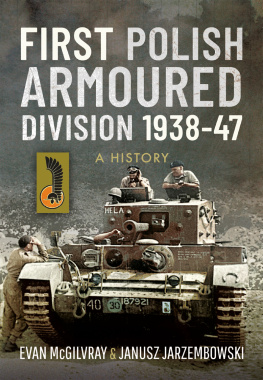P UBLISHER S SAN 854-1388eBk-KPN ISBN 978-0-9653467-5-7Kaziks Polish Navy, The Betrayalby Kazimierz J. Kasperek with Pat McDonough
Terra Sancta Press, Melbourne, Florida 32935-3655
Print Edition 2008,
Digital eBk Edition July 2012
Testimonials for Kaziks Polish Navy, The Betrayal
Dennis Hamilton said: Kaziks Polish Navy, The Betrayal is an important addition to World WarII history. A patriotic, heroic Love Story love of country, of family, and of survival against allodds. Truly inspiring!
Henry Sokoowski, Polish Combatants Association Canada, said: Kaziks Polish Navy, TheBetrayal is a rare and precious account of Polands World War II Navy in action, told by one ofthe men who lived it. Kaziks memoir provides an important window into this forgotten chapterof history, while the recollections of Kazik and Irene take one on an engaging trip through theups and downs of surviving war and the bittersweet post-war period.
John B. Davenport, Ph.D., said: A fine first-hand account of the Polish Navy in World War II a branch of the Allied armed forces not well-chronicled in English.
Joyce Henderson, Author, said: This story of Kaziks Polish Navy, The Betrayal had to bepublished. Not only did the exploits of the Polish Navy need to be told, but moreover because ofthe heroism and enduring optimism of Kazik Kasperek. In spite of war, imprisonment, andinjustice, he never loses his personal grace.
R. Bradley Witenhafer said: I was inspired by Kaziks attitude and valor. He was a courageousman. I didnt want to stop reading.Mirinda Hartselle said: Reading
Kaziks Polish Navy, The Betrayal made World War II historycome alive.
About Kaziks Polish Navy, The Betrayal
Kaziks Polish Navy, The Betrayal is a narrative history of Kazimierz J. Kaspereks servicein the Polish Navy from 1936 to 1945, which recounts his exciting exploits in battle, as a POW,as a survivor, and as a true hero. The book includes more than 80 never before publishedphotographs, an Epilogue to bring the story of Kazik, Irene, and their Polish Navy friends topresent time, and appendixes of a letter, a list of awards, and excerpts of the Yalta and Potsdamagreements as they pertained to Poland.
About the Authors
Kazimierz J. Kasperek enlisted as a volunteer in the Polish Navy in 1936. He waspromoted to Chief Petty Officer, Paymaster and Supply Officer. He served in the Polish Navyfrom February 1, 1936 to May 8, 1945, except for a brief assignment to the Polish Army. Kazikfought in the Battle of Hel Peninsula, the Battle of Malta, Operations Alacrity, Harpoon,Dragoon, and many others. He was the most decorated NCO in the Polish Navy in World War
II. He retired as a Lieutenant Commander.At one point he was a POW from September, 1939 to March 1940 in Germany and escaped
to free Holland. He fought with the Polish Navy-in-Exile alongside the British, searching for Uboats, escorting convoys, hunting subs, and shooting planes. He fought for the entirety of World
War II.He married Irene Lance and had two daughters. After the war, he was retrained in England as
a fine furniture maker. The young family moved to Chicago where he worked for MarshallFields and others as a fine furniture repair field representative. Kazik and Irene retired to
Floridana Beach Florida.After Poland had direct election of its President, Kazik wrote his memoir, a narrative historychronicling the Polish Navy in World War II, complete with never before published photographsof his adventures.After an extended illness, Kazik died June 28, 2008. He held his book
Kaziks Polish Navyclose to his heart each night.
Pat McDonough is a writer who was a Pulitzer Prize semi-finalist in 1997 for hercomprehensive study of homelessness entitled Without Keys: My 15 Weeks with the StreetPeople. She is co-author of Kaziks Polish Navy, The Betrayal and Strangers Brothers byRaymond F. Flaherty. Both of these books were Pulitzer Prize Contenders. As a technical writer,she co-authored Solid Waste Management, a Guide for County Government Officials. She hasauthored numerous short works of non-fiction and written other books in the capacity ofghostwriter. She works as a book editor and writing/publishing coach with McDONOUGHCONSULTING in Melbourne, Florida. Her book, From Rough to Ready, an Editors Tips forWriters is available on line.
Preface
It has been my privilege to work on this book, and to see history from the viewpoint of thisbrave, patriotic man, who performed his duty with optimism and purpose.
Between March and August 1939, Britain and Poland entered into agreements to grant:unrestricted use of each others territorial waters and ports; a promise of provision of war shipsto Poland should it become necessary; and to work together as independent navies retaining theirown jurisdictions, but agreeing to mutual aid and cooperation. These promises were made withthe intention that it would continue after World War II. This book is about the promise, and thefailure of that promise, and how it impacted one man and his family, his country, and his navy.Since everyone in the Polish Navy knew everyone else, at least at the start of World War II,telling Kaziks personal story is telling the story of everyman in the Polish Navy and PolishNavy-in-Exile during World War II.
Bookcover Art and Symbolism: The eagle shield on the front cover is a traditional symbolof Poland. The watercolor by Polish Navy Seaman R. Checktowski, (ret.), depicts the DestroyerO.R.P. Kujawiak where Kazik was at the helm in the Battle of Malta in June 1942.
The colors red and white are the national colors of Poland. The red and white flag on theback cover is a variation of the Polish Navy ensign and jack flags. The three-masted schooner onthe back cover is of the cadet training vessel, the O.R.P. Iskra, on which Kazik sailed for twosix-month voyages. The photo is as it appeared on a postcard issued by the Polish NavalAssociation.
Ships: In Poland at the start of World War II, it was the custom for individual cities to raisethe funds to purchase and outfit a ship for the Polish Navy. In return, the ship could be named forthat city, e.g., the O.R.P. Gydnia named for Gydnia, Poland. This way, the prewar governmentcould avoid levying higher taxes for military spending. As a result of their particular investment,the people of Poland took an immense pride in their Navy.
It was also the custom in Poland and the United Kingdom to recycle the name of a ship,applying the name to a replacement vessel which may or may not be of the same classification.So in this book, there is more than one O.R.P. Gydnia. Over the course of history, there were 14ships named the H.M.S. Garland before this particular ship was given to the Polish Navy, andrenamed the O.R.P. Garland.
Methodology: Kazimierz J. Kasperek provided his typed manuscript of recollections of hisPolish Navy and Army service in World War II, personal papers, a 1978 travel journal, andphotographs. Irene Kasperek validated his recollections, and contributed vignettes of her own.
Based on his original manuscript, Pat McDonough combined all the information into thisbook. She checked his recollections by finding sources to document his factual record. Whereappropriate, Pat gathered names and dates from the public record, Polish Navy internet sites,histories, atlases, Kaziks personal papers, backs of postcards, photographs, books, and by askinglots of questions. She conducted a series of interviews with Irene and Kazik Kasperek, as well astelephone conversations with Irene and their daughters.
Irene first met Kazik in December, 1941, so she lived through these events and wasobviously significant in Kaziks life. Her recollections are crystal clear. She has been atremendous help in fleshing out the events and factual information.
Next page 








